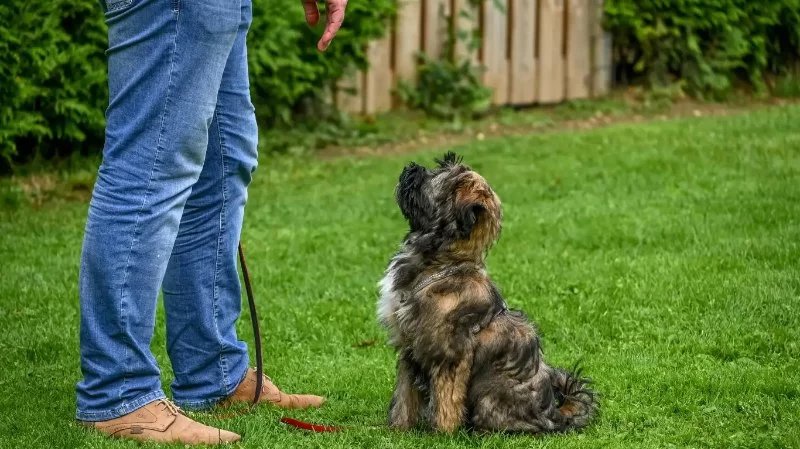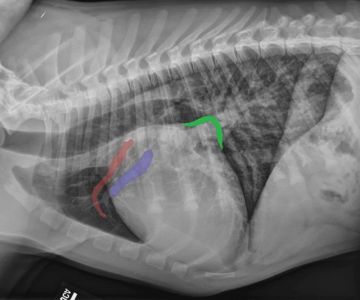- 1‑Why Dogs Get Anxious in New Environments
- 2‑Step-by-Step Guide to Training Dogs to Stay Calm in New Places
- 3‑Tips for Preventing Stress in Dogs During Travel
- 4‑How to Create a Safe and Calm Space for Your Dog
- 5‑How Hidden Brook Veterinary Can Support Your Dog’s Behavioral Health
1. Why Dogs Get Anxious in New Environments
Just like humans, dogs can feel overwhelmed and anxious when exposed to new environments. The sights, sounds, and smells of unfamiliar places can cause stress for your dog, especially if they aren’t used to being outside their comfort zone. The anxiety often manifests as barking, whining, or even destructive behavior. Understanding the cause of your dog's stress is the first step toward calming them.
Dogs are territorial animals, and they can feel unsettled when they’re taken out of familiar surroundings. New places represent a lack of control and security, triggering their natural flight-or-fight response. However, with the right approach and training techniques, you can help your dog adjust to new environments more comfortably, reducing their anxiety over time.
2. Step-by-Step Guide to Training Dogs to Stay Calm in New Places
Training your dog to remain calm in new environments requires patience, consistency, and positive reinforcement. Here’s a step-by-step guide to help your dog adjust to unfamiliar places with ease:
2.1 Start Small and Gradual
Begin by exposing your dog to less stimulating environments. This could be as simple as visiting a quiet park or sitting in a calm, public place. The goal is to desensitize your dog to new surroundings without overwhelming them. Gradually increase the level of stimulation as your dog becomes more comfortable. This could involve visiting busier places or taking longer walks in different neighborhoods.
Remember, the key is to move at a pace your dog can handle. If you push them too hard, it can increase anxiety rather than alleviate it.
2.2 Use Positive Reinforcement
Whenever your dog remains calm in a new environment, reward them with treats, praise, or their favorite toy. This will help them associate new experiences with positive outcomes. Over time, your dog will learn that staying calm in new environments results in rewards, and they’ll be more likely to repeat this behavior.
For example, during a walk in a new park, you could offer treats every time your dog shows calm behavior, such as sitting or lying down quietly.
2.3 Create a Familiar Routine
Establishing a routine is important for calming dogs in new places. When you visit a new environment, try to maintain some aspects of your dog’s usual routine, such as feeding, walking, and playing at regular times. Familiar activities can help them feel more secure and less stressed.
Additionally, bring along their favorite blanket, toy, or other comfort items. This familiar scent can provide a sense of security and ease their anxiety in unfamiliar places.
2.4 Stay Calm Yourself
Dogs are sensitive to their owners' emotions, so it’s crucial to remain calm and composed when introducing them to new environments. If you’re anxious, your dog will pick up on it, which can escalate their stress. Stay relaxed and confident, and your dog will be more likely to mirror that behavior.
3. Tips for Preventing Stress in Dogs During Travel
Travel can be particularly stressful for dogs, especially when it involves long car rides or flights. Here are some practical tips to help reduce travel stress for your dog:
3.1 Plan for Breaks During Long Car Rides
If you’re traveling by car, plan regular breaks to allow your dog to stretch, drink water, and relieve themselves. Keeping them comfortable and well-rested during the journey will reduce their stress and help them adapt better to the new environment.
3.2 Use a Dog Carrier or Travel Harness
For dogs traveling by car, a dog carrier or travel harness can help them feel more secure during the ride. A secure space prevents them from feeling anxious or out of control and reduces the risk of injury if there’s sudden movement. For larger dogs, a travel harness can prevent excessive movement and keep them safe.
3.3 Stay Hydrated and Fed
Traveling can disrupt your dog's regular eating and drinking schedule, which can add to their stress. Make sure your dog has access to fresh water and food during long journeys to keep them hydrated and comfortable.
4. How to Create a Safe and Calm Space for Your Dog
Once you arrive at your destination, it’s important to create a calming environment for your dog. Here’s how to make them feel more comfortable in unfamiliar surroundings:
4.1 Designate a Quiet Area
If you’re staying in a hotel or at a friend's house, designate a quiet corner for your dog. This will be their space to retreat to when they need rest or when they feel overwhelmed. Make it cozy with a blanket, their bed, or a favorite toy.
4.2 Maintain a Routine
Consistency is key. Even in a new environment, try to keep your dog’s routine the same. Take them for walks at their usual times, feed them at regular intervals, and stick to your usual playtime activities. This structure will help your dog feel more grounded and reduce feelings of insecurity.
4.3 Gradually Introduce Them to New Areas
If you're staying somewhere for an extended period, gradually introduce your dog to different areas of the new environment. Let them explore new spaces at their own pace, and always supervise them to ensure they feel safe.
5. How Hidden Brook Veterinary Can Support Your Dog’s Behavioral Health
If your dog is struggling with anxiety in new environments or exhibits extreme stress, Hidden Brook Veterinary can help. Our team of experienced veterinarians specializes in behavioral health and can provide personalized strategies to help your dog cope with anxiety. Whether your dog needs behavior therapy, calming treatments, or medication, we’re here to ensure your dog’s emotional well-being.
Don’t let stress or anxiety limit your dog’s experiences. Contact Hidden Brook Veterinary today to schedule a consultation and start your dog on the path to a calmer, happier life.












